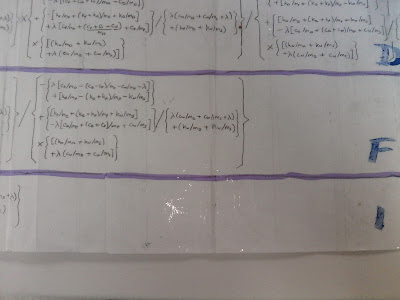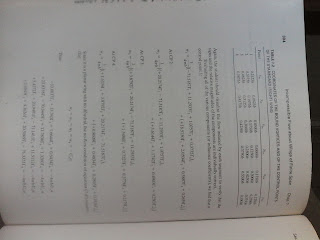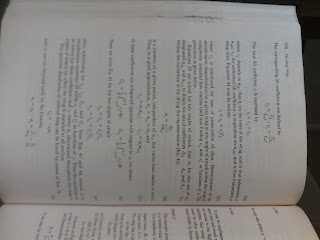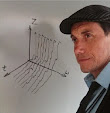Electron ‘shape’ determined for the first time
Physicists have been able to determine the geometry of an electron and how it might appear in an atom for the first time — opening the possibility of using electron spin in quantum computers.
An electron is trapped in a quantum dot, which is formed in a two-dimensional gas in a semiconductor wafer. However, the electron moves within the space and, with different probabilities corresponding to a wave function, remains in certain locations within its confinement (red ellipses). Using the gold gates applied electric fields, the geometry of this wave function can be changed. (University of Basel, Departement of Physics)
Despite us being aware of the presence of electrons in atoms since the 1890s scientists have been unable to nail down an accurate geometry for these fundamental particles, instead, describing electrons as a ‘fuzziness’ around an atomic nucleus. But now Physicists at the University of Basel have shown how a single electron looks in an artificial atom.
A newly developed method enables them to show the probability of an electron being present in a space — allowing for improved control of electron spins. The study results were published in Physical Review Letters with the related theory published in Physical Review B.
The spin of an electron is a promising candidate for use as the smallest information unit — a qubit — of a quantum computer. Controlling and switching this spin or coupling it with other spins is a challenge on which numerous research groups worldwide are working. The stability of a single spin and the entanglement of various spins depends, among other things, on the geometry of the electrons — which previously had been impossible to determine experimentally.
Artificial atoms are key
Professors Dominik Zumbühl and Daniel Loss from the Department of Physics and the Swiss Nanoscience Institute at the University of Basel headed the teams which developed a method by which they can spatially determine the geometry of electrons in quantum dots.
A quantum dot is a potential trap which can confine free electrons in an area which is about 1000 times larger than a natural atom. The trapped electrons behave similar to electrons bound to an atom, thus quantum dots are also known as “artificial atoms”.
The electron is held in the quantum dot by electric fields — moving within the space remaining in certain locations within its confinement. This behaviour can be defined probabilistically and described with a wavefunction.
The scientists then use spectroscopic measurements to determine the energy levels in the quantum dot and study the behaviour of these levels in magnetic fields of varying strength and orientation. Based on their theoretical model, it is possible to determine the electron’s probability density and thus its wavefunction with a precision on the sub-nanometer scale.
Loss explains: “To put it simply, we can use this method to show what an electron looks like for the first time.”
Understanding and perfecting
The researchers, working closely with colleagues in Japan, Slovakia and the US, were able to gain a better understanding of the correlation between the geometry of electrons and the electron spin — which should be stable for as long as possible and quickly switchable if it’s to be used as a qubit.
Zumbühl says: “We are able to not only map the shape and orientation of the electron but also control the wave function according to the configuration of the applied electric fields.
“This gives us the opportunity to optimize control of the spins in a very targeted manner.”
The spatial orientation of the electrons also plays a role in the entanglement of several spins. Similarly to the binding of two atoms to a molecule, the wave functions of two electrons must lie on one plane for successful entanglement.
With the aid of the developed method, numerous earlier studies can be better understood and the performance of spin qubits can be further optimized in the future.
Source
Volver a Principal Página / Volver a la Página de Medios /首页/ Заглавная страница / मुखपृष्ठ / Hauptseite / Accueil / principale Pagina / Recepção / Strona główna / الصفحةالرئيسية /メインページ/ 대문 / หน้า หลัก / Huvudsida / Κύρια πύλη / Etusivu / Hier / עמודראשי
Physicists have been able to determine the geometry of an electron and how it might appear in an atom for the first time — opening the possibility of using electron spin in quantum computers.
An electron is trapped in a quantum dot, which is formed in a two-dimensional gas in a semiconductor wafer. However, the electron moves within the space and, with different probabilities corresponding to a wave function, remains in certain locations within its confinement (red ellipses). Using the gold gates applied electric fields, the geometry of this wave function can be changed. (University of Basel, Departement of Physics)
Despite us being aware of the presence of electrons in atoms since the 1890s scientists have been unable to nail down an accurate geometry for these fundamental particles, instead, describing electrons as a ‘fuzziness’ around an atomic nucleus. But now Physicists at the University of Basel have shown how a single electron looks in an artificial atom.
A newly developed method enables them to show the probability of an electron being present in a space — allowing for improved control of electron spins. The study results were published in Physical Review Letters with the related theory published in Physical Review B.
The spin of an electron is a promising candidate for use as the smallest information unit — a qubit — of a quantum computer. Controlling and switching this spin or coupling it with other spins is a challenge on which numerous research groups worldwide are working. The stability of a single spin and the entanglement of various spins depends, among other things, on the geometry of the electrons — which previously had been impossible to determine experimentally.
Artificial atoms are key
Professors Dominik Zumbühl and Daniel Loss from the Department of Physics and the Swiss Nanoscience Institute at the University of Basel headed the teams which developed a method by which they can spatially determine the geometry of electrons in quantum dots.
A quantum dot is a potential trap which can confine free electrons in an area which is about 1000 times larger than a natural atom. The trapped electrons behave similar to electrons bound to an atom, thus quantum dots are also known as “artificial atoms”.
The electron is held in the quantum dot by electric fields — moving within the space remaining in certain locations within its confinement. This behaviour can be defined probabilistically and described with a wavefunction.
The scientists then use spectroscopic measurements to determine the energy levels in the quantum dot and study the behaviour of these levels in magnetic fields of varying strength and orientation. Based on their theoretical model, it is possible to determine the electron’s probability density and thus its wavefunction with a precision on the sub-nanometer scale.
Loss explains: “To put it simply, we can use this method to show what an electron looks like for the first time.”
Understanding and perfecting
The researchers, working closely with colleagues in Japan, Slovakia and the US, were able to gain a better understanding of the correlation between the geometry of electrons and the electron spin — which should be stable for as long as possible and quickly switchable if it’s to be used as a qubit.
Zumbühl says: “We are able to not only map the shape and orientation of the electron but also control the wave function according to the configuration of the applied electric fields.
“This gives us the opportunity to optimize control of the spins in a very targeted manner.”
The spatial orientation of the electrons also plays a role in the entanglement of several spins. Similarly to the binding of two atoms to a molecule, the wave functions of two electrons must lie on one plane for successful entanglement.
With the aid of the developed method, numerous earlier studies can be better understood and the performance of spin qubits can be further optimized in the future.
Source
Volver a Principal Página / Volver a la Página de Medios /首页/ Заглавная страница / मुखपृष्ठ / Hauptseite / Accueil / principale Pagina / Recepção / Strona główna / الصفحةالرئيسية /メインページ/ 대문 / หน้า หลัก / Huvudsida / Κύρια πύλη / Etusivu / Hier / עמודראשי





































































































































